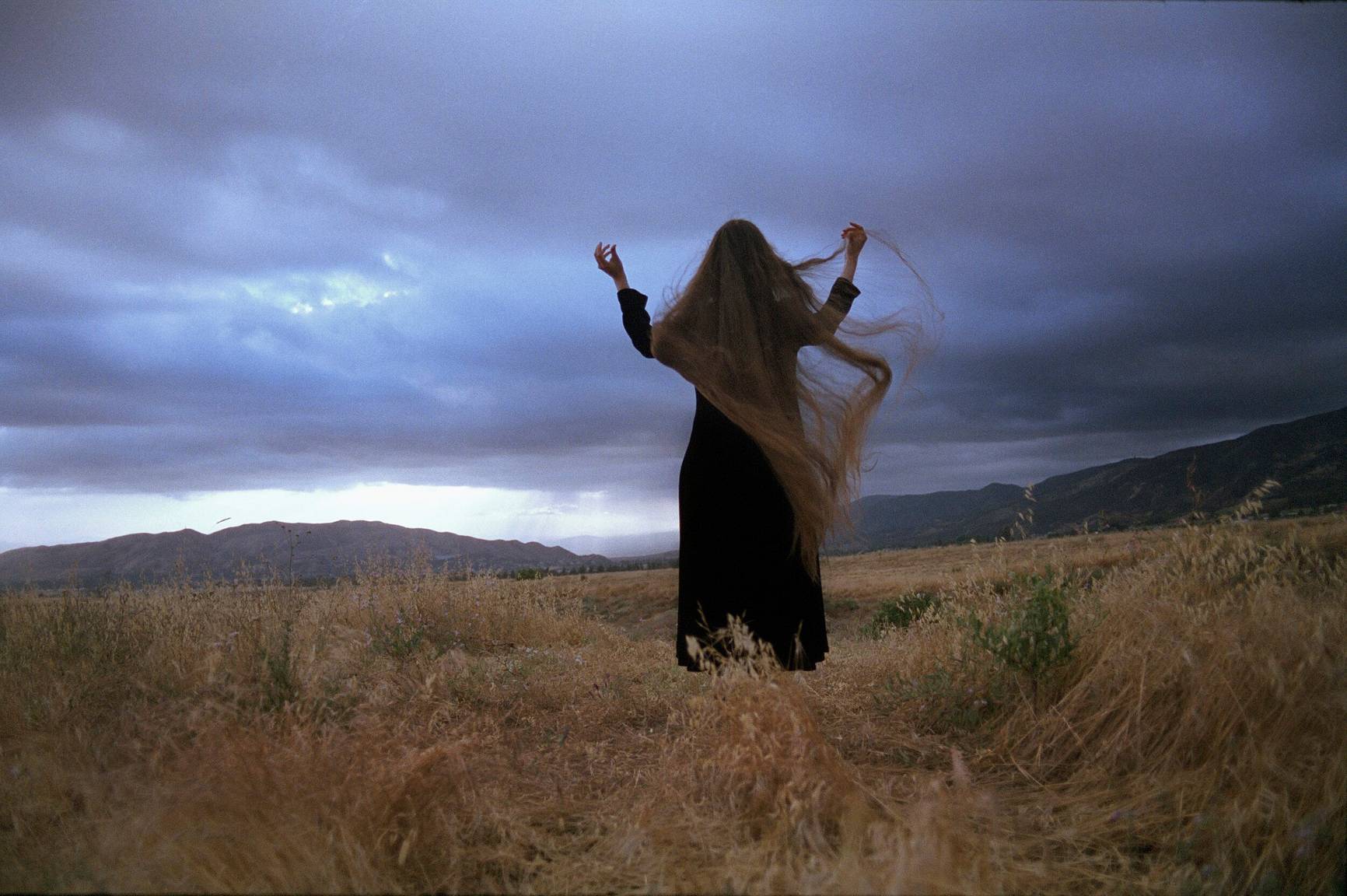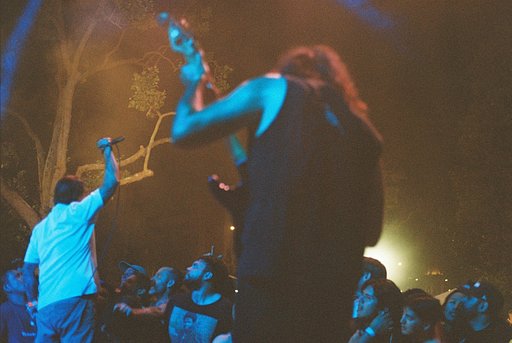World Building and Discovery Through Self-Portraiture With Tara Violet Niami
2 4 Share TweetPhotographer and cinematographer Tara Violet Niami’s work encompasses narrative filmmaking, documentary, fine art photography, fashion, and travel. With a portfolio that showcases her versatility as a storyteller, each facet of the art form expands and informs her personal visual style and language.
As an alumna of the legendary American Film Institute (AFI) cinematography program, Tara has spent most of her professional career behind the camera, building a visual language that translates into the form of moving images. With a focus on video as a medium, she has vast experience in composing and capturing worlds that push narrative stories forward. Prior to pursuing cinematography full-time, she had explored self-portraiture, starting when she was 14 years old and growing it with each passing year.
We got the chance to speak with Tara and explore her ongoing self-portrait series and how her visual style of photography has evolved through time.
Hi Tara! Welcome to Lomography Magazine! Can you introduce yourself and tell us what you do?
I am Tara, My pronouns are she/her. I was born in New York and moved to Los Angeles when I was starting second grade. I grew up in Los Angeles and went to college in Brooklyn. I am a freelance photographer and cinematographer. I also teach an Introduction to Cinematography course at Dodge Film School which is part of Chapman University in Southern California.
I received my BFA in fine art photography though I also took all of my electives in film. After learning some of the various aspects of filmmaking — directing, writing, cinematography, editing, and sound — I found myself especially drawn to cinematography and decided to focus on it. I then got my Masters in cinematography at the American Film Institute Conservatory in Los Angeles.
What have you been curious about and exploring recently?
Recently I’ve been curious about and enjoying doing more documentary cinematography. I avoided documentaries for a while due to being hyper-sensitive about not crossing people’s boundaries, worrying that I’d intrude in their personal space or depict them inaccurately. But I’ve gotten more comfortable with documentary filmmaking now, and am finding it especially enriching.
I just recently shot a documentary in South Wales in what used to be coal mining communities with my father Ramin and it was an amazing experience.
When were you first introduced to film photography?
The first time I shot on film was when I was 13. I was in a photo club at my school which had a darkroom. The club was run by Harris Hartsfield who became my teacher when I started taking his classes.
I first learned to shoot on black and white 35 mm film. Over time I branched out and got into shooting on color film as well.
What were your first film cameras?
My first film camera was a Nikon FM10 which I borrowed at school. I still use one of my own.
Do you have any go-to film stocks you usually use or are you more open to exploring and trying out others?
I mainly shoot on Portra 400 speed film though I also am a fan of Ektachrome, Ektar and Cinestill 50D. I have also shot on >LomoChrome Purple 35 mm film Purple (which was fun!) and expired film stocks like Agfachrome and 1960s Kodacolor stock.
What about film photography compels you to go out and shoot?
I find shooting on film to be such a wonderful experience. I love how it limits me in regards to how many single images I can shoot, I love the stripped down mechanical nature of shooting it and the satisfaction of getting the film back from a lab after developing and seeing it turned out better than expected!
There are times though that I just know in the moment that the film photo I am shooting will be special and that is a great feeling.
You are an artist, photographer, filmmaker, and creative film lecturer whose work spans over a decade in the world of art, cinema, and still photography. What would you say is a common theme or driving force present throughout your projects? How do you find these worlds and works intertwining with each other?
I feel that growing up with a mixed cultural heritage as a child of immigrants has shaped the way I live and see the world. More specifically, my Iranian roots manifest through my taking elements from ancient Persian art and putting them in my contemporary work. I find especially as an Iranian American woman, that I have something to offer in representing us behind the camera as there are not many of us doing what I do – at least not yet, hopefully that’ll change.
Also, I have photographed a lot of other kids of immigrants who are also of mixed cultural heritage and I feel as if we are not always as represented so it’s great to represent us in my photographs.
In terms of my different mediums, my filmmaking work influences and inspires my photography work and vice versa. I see them as different sides of the same coin in being ways of telling stories visually.
You shared through one of your photographs on Instagram that you had started this series of self portraits when you were 14 years old, being “interested in vulnerability and performance since childhood.” How has this initial approach and understanding of it changed over the years?
I began taking self portraits as I wanted to experiment and it was easy to use myself. I was a bit too shy to do shoots with friends modeling for me at first so I did self portraits instead. However even after I started to photograph other people I continued to take self portraits.
There isn’t one specific thing that inspired me to do self portraiture beyond that, nor a straightforward approach exactly. I find self portraiture to be all sorts of things, fun, cathartic, calming, stimulating, introspective. Sometimes when I’m taking self portraits I feel like I’m in some kind of a trance.
I enjoy using my face and my body, even simply as an obscured anonymous figure, to express emotions in my photography. It feels good to silently perform for the camera, imagine and conceptualize ideas and then bring them to life.
I would say my self-portraiture has gotten more ‘raw,’ atmospherically darker, and more grown up as I’ve aged. There were always some eerie qualities to my teenage self-portraiture but there was also more innocence and fantasy but there is less and less of that in my more recent work. There are still magical aspects, a kind of stylized realism, but it’s more mature.
Nature is a consistent element present in your self-portraits. What is it about our natural world that you find yourself gravitating towards?
I feel very connected to nature. I grew up reading poetry like Emily Dickinson, watching films like The Secret Garden, and seeing nature as a magical dreamy thing. As an adult, I love the work of Andrei Tarkovsky and Terrence Malick, both of whom showcase the poeticism of nature in their films. I’m also inspired by the movement of German Romanticism in painting like Casper David Friedrich’s work.
Living in big metropolitan cities you have to seek out nature intentionally, which I do, to center myself and to photograph. I love capturing a relationship between a person, be it myself or others, and nature. I find nature to be grounding. It relaxes me and also helps to remind me I am a speck compared to the universe, and the Earth we live on.
As a filmmaker with a focus on cinematography, how have you noticed your taste grew and was reflected in the self portraits you would take? Has your work in filmmaking influenced how you approach photography?
Cinematography is both similar and radically different to photography, as it is not still images but images in motion, in succession, combined with sound to tell an overall story. In still photographs, you’re dealing with a frozen moment where you don’t see the ‘before’ and ‘after’ which is fascinating as well.
My work in film has influenced my photography and vice versa. I don’t have a deep answer to how exactly or why though!
Although I’m a conceptual photographer who art directs, styles my images etc., I work intuitively. Ideas come to me building off of art that has inspired me that exists in my subconscious, in my memories. I don’t plan everything as I like to be free to discover new things and experiment.
Who are your favorite storytellers, artists, filmmakers, and creatives who also shoot on film?
I have so many! But some include Ellen Rogers, Katie Eleanor, and El Hardwick (all three are friends of mine), Deborah Turbeville (now no longer with us sadly), Sally Mann, Paolo Reversi.
They all are great storytellers whose images are not only aesthetically gorgeous but emotionally resonate with me. All of them have unique visions and styles. I could go on and on about how magnificent their work is but that’d be too much to read!
Anything else you’d like to share with the Lomography community?
I recommend Andrei Tarkovsky’s Polaroids book – it is totally transformative! Also, go rent Earth Mama directed by Savanah Leaf. It's heartbreaking, sensitively crafted, and beautifully shot on 35 mm film.
Thank you to Tara for speaking with us and sharing her journey on film. See more of her film and photography work on her Instagram and website.
Any portrait photographers you'd like to see in the Lomography Magazine? Feel free to reach out and give a shout to @macasaett's LomoHome!
written by macasaett on 2023-10-11 #people #interview #self-portrait #filmmaking #cinematography
































2 Comments